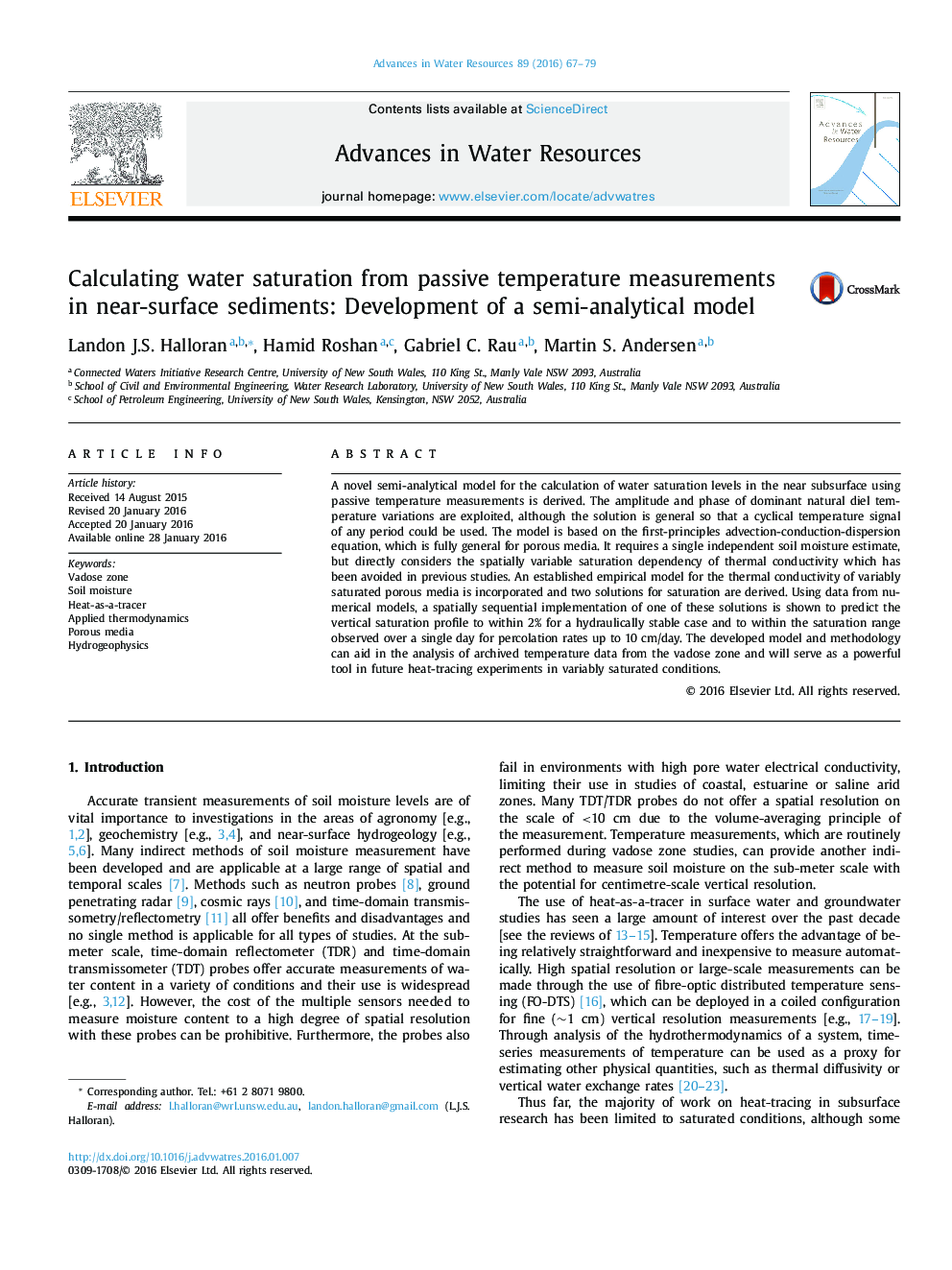| کد مقاله | کد نشریه | سال انتشار | مقاله انگلیسی | نسخه تمام متن |
|---|---|---|---|---|
| 4525278 | 1625621 | 2016 | 13 صفحه PDF | دانلود رایگان |
• New model estimates water saturation from amplitude and phase of temperature signal.
• Model derived from first-principles advection-conduction-dispersion equation.
• Explicit relationship between thermal conductivity and saturation implemented.
• Sequential implementation of model accurately reconstructs saturation profile.
• Shallow saturation profiles with subsurface percolation can be estimated.
A novel semi-analytical model for the calculation of water saturation levels in the near subsurface using passive temperature measurements is derived. The amplitude and phase of dominant natural diel temperature variations are exploited, although the solution is general so that a cyclical temperature signal of any period could be used. The model is based on the first-principles advection-conduction-dispersion equation, which is fully general for porous media. It requires a single independent soil moisture estimate, but directly considers the spatially variable saturation dependency of thermal conductivity which has been avoided in previous studies. An established empirical model for the thermal conductivity of variably saturated porous media is incorporated and two solutions for saturation are derived. Using data from numerical models, a spatially sequential implementation of one of these solutions is shown to predict the vertical saturation profile to within 2% for a hydraulically stable case and to within the saturation range observed over a single day for percolation rates up to 10 cm/day. The developed model and methodology can aid in the analysis of archived temperature data from the vadose zone and will serve as a powerful tool in future heat-tracing experiments in variably saturated conditions.
Figure optionsDownload as PowerPoint slide
Journal: Advances in Water Resources - Volume 89, March 2016, Pages 67–79
